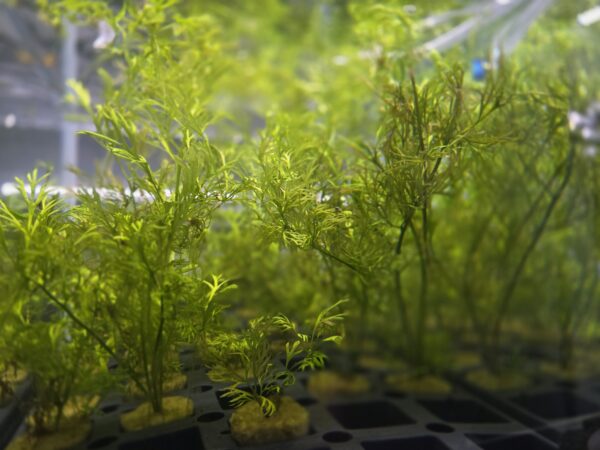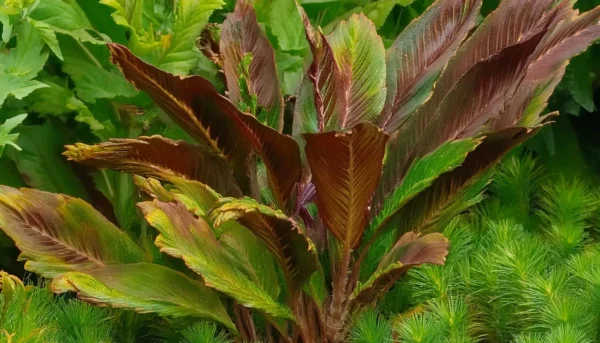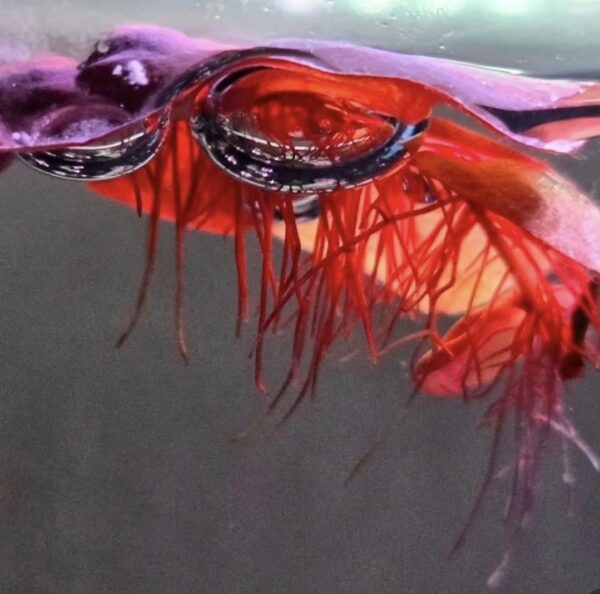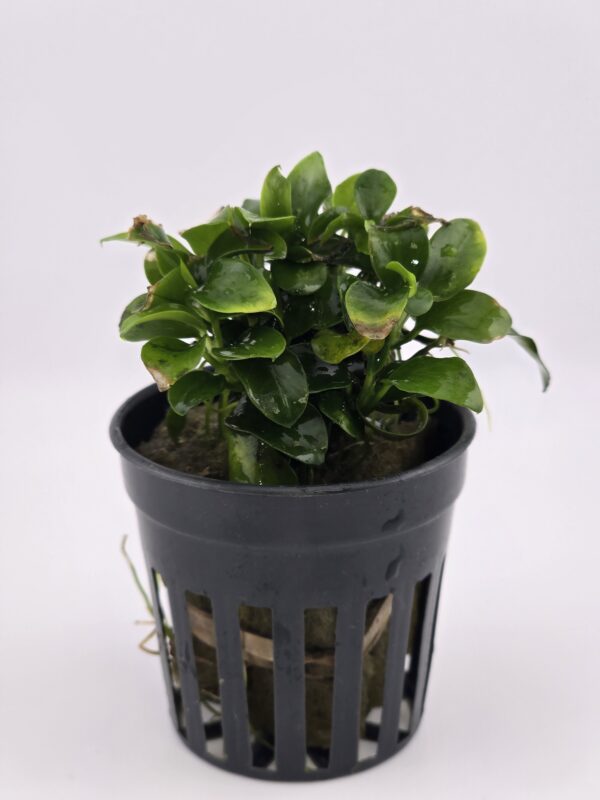Description
cryptocoryne parva mini
1. Substrate and planting
- Nutrient-Rich Substrate: Cryptocoryne parva thrives in a nutrient-rich substrate like specialized aquarium soil or a mixture of sand/gravel with laterite or other additives.
- Planting: When planting, ensure the roots are buried and the crown is just above the surface.
- Spacing: Plant individual stems about 1-2 inches apart to allow for proper growth and prevent overcrowding.
- Root Tabs: Supplement with root tabs, especially if using inert substrates like gravel or sand, to provide essential nutrients directly to the plant’s roots.
2. Lighting
- Light Intensity: Cryptocoryne parva thrives best under moderate to low lighting conditions. Too much light can encourage algae growth.
- Duration: Provide 8 to 10 hours of light per day, using a timer for consistency.
- Light Type: Full-spectrum LED or fluorescent lighting is ideal.
3. Water parameters
- Temperature: Maintain a stable water temperature between 72°F and 82°F (22°C and 28°C).
- pH Level: Aim for a pH range of 6.0 to 7.5.
- Water Hardness: Prefers soft to moderately hard water, ideally between 2 and 12 dGH.
- Water Flow: Keep water flow low to moderate to avoid damaging the delicate leaves.
4. Fertilization and CO2
- Fertilization: While not heavy feeders, supplementing with liquid fertilizers containing macronutrients (nitrogen, phosphorus, potassium) and micronutrients (iron, manganese) will promote healthy growth and vibrant foliage.
- CO2 Injection: CO2 injection isn’t required for Cryptocoryne parva to thrive, but it can accelerate growth and enhance leaf coloration.
5. Maintenance and common issues
- Slow Growth: Cryptocoryne parva is naturally slow-growing, so patience is key. If growth is too slow, check lighting levels and water parameters, and ensure adequate fertilization.
- Crypt Melt: This common issue involves leaves melting or dissolving, often occurring when the plant is introduced to a new tank or undergoes environmental changes. Don’t panic; the plant will usually recover after a few weeks with stable conditions.
- Yellowing Leaves: May indicate nutrient deficiencies, especially iron or other micronutrients. Add liquid fertilizer or root tabs to address this.
- Algae Growth: Too much light or nutrient imbalance can lead to algae. Reduce lighting duration, limit nutrient levels in the water column (using root tabs instead of liquid fertilizers can help here), and introduce algae-eating fish or invertebrates like Amano shrimp, Nerite snails, or Otocinclus catfish.
- Trimming: Trim dead or decaying leaves at the base to encourage new growth. Avoid disturbing the roots, as Cryptocoryne parva dislikes being moved








Reviews
There are no reviews yet.